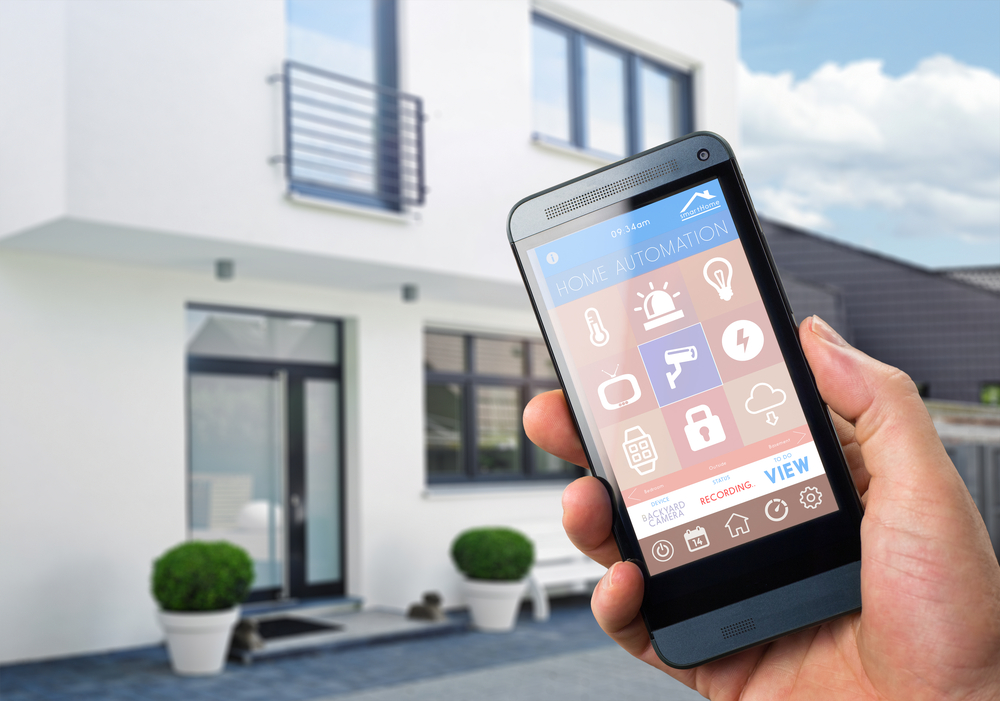
The possibility of burglary, property theft, break-ins, and home invasions instills fear in all of us and can occur in any neighborhood. This fear is both irrational because it is not excessively common, and rational because it always remains a possibility. However, securing your home remains an important responsibility, to deter and prevent burglary, as well as for the added peace of mind for you and your family. There are several things you can do to make sure that you protect your exterior doors from burglaries and theft.
- Doorway Lighting at Every Entry
Motion lights, timed lights, or simply adequate basic lighting at all of your entry doors is highly recommended as a basic first step. Lighting is almost always placed at the front door, but sometimes back doors, garage doors, and patio doors are overlooked. Motion lights are the highest deterrent, as they catch a thief off guard and alert any neighbors. Timed lights can be set while you’re out of town or on a logical schedule. But even just being sure you have a basic flip switch at every entryway, with lights on in the evening, is going to prevent at least a portion of burglaries. Remember, the thief will be looking for the easiest option on the block. Your role will be to keep those lightbulbs changed and use the lighting appropriately.
- Choose Specialized Locks
Many options exist in the deadbolt lock aisle, some of which are better at deterring kick-ins, prying, or other means of forced entry. Deadbolt locks should be used in all cases except for sliders, and are compatible with all exterior door styles and types, from solid wood to fiberglass to French doors. Look for a deadbolt lock made from solid metal and with screws hidden or not reachable.
Dead-locks are another options to additional security, as a secondary lock. It does not have a keyed entry on the outside, thus no lock to pick. A thief will find it difficult to get into your home except by using blunt force which also takes time, something burglars want to avoid.
- Add A Strike Box
Replace standard existing strike plates with a strike box. This has a metal pocket and is attached with 3 inch screws in the stud behind your doorjamb. The strike box is not expensive, but will require custom installation. If you are not handy, have this professionally installed, as it will require carpentry tools and skills to make the modifications. You’ll need to adjust the size of the hole as well as cover plates recession.
- Choose Strong Glass
Popular French doors and modern glass front doors are appealing but may add a security risk. Be sure you have keyed locks inside the doors instead of a twist deadbolt. Choose thicker glass, at least 3/4” thick, like in our Glass Front Doors. Consider glass doors that have ornate wrought-iron decoration; the Mediterranean look of these doors has come a long way and can be quite attractive. Some glass doors are even impact-rated to resist storms and will be harder to break.
Another surprising product on the market is a window security film. It is applied just like window tint and prevents the glass from shattering, making it that much harder to get through. It will protect in both directions inside and out.
- Thieves Love Sliders, Secure Them First
Sliding glass doors, are always in the back or side of a house or apartment patio, shielding the thief from neighbors’ eyes. And thieves know that some residents overlook simple, inexpensive protective measures, even forgetting to lock them. The click button lock usually included is not a secure mechanism. Security bars on the market can be installed perpendicular to the track and lowered into the track as needed. However, if you’re on a budget, a long piece of 2×2 wood or solid pipe can be dropped into the track area to serve the same purpose. You’ll also find simple latch pieces to install, up high or at eye level, that flip into place to add another layer of security. Use both mechanisms as often as possible.
- Door Cameras
Peepholes are useful, but in this day and age, we have dozens of inexpensive door cameras that are increasingly common. They function not only as a peephole to see who is there but can record activity when you are not home, and be used as an intercom. They connect directly to your mobile phone and range in price from $30 to $200.
Consider adding friendly signage notifying that a camera is in use. Don’t underestimate the deterrent factor. A thief can choose any door in the neighborhood or apartment building, let them know you will have evidence and means to identify them if they linger at your door. This also deters package theft.
- Rekey Your Locks, Renters.
Although it is standard to rekey a lock in between tenants, it’s worth verifying this was performed. Individual landlords may cut this corner, so ask them specifically regarding every entry door. By inspecting the knobs and deadbolts, you can tell if the center keyhole section is new and shiny. For homeowners, re-keying kits matching most lock brands can be found at hardware stores and home-improvement centers and work on both entrance and dead-bolt locks. They also allow up to six locks to be re-keyed for the same key.
Following these basic steps will bring you peace of mind and additional theft prevention. Remember that you cannot prevent every single break-in; your goal is to deter it, and not be the easy target on the block or building. Crime rates are improving, and the chances of this happening to your family are very small, but taking basic steps makes sense for responsible residents.
 Opanpan Door Skins
Opanpan Door Skins